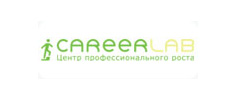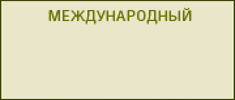List articles
|
№ 5(65)
31 october 2017 year
Rubric: Antitrust regulation Authors: Knyazeva I., Bondarenko I., Paderina K. |
The procedure (characteristics and stages) of engaging experts at different investigation (case
consideration) phases is analyzed as part of FAS control-and-supervision efforts. The author proposes
classification and types of expert examination performed by various expert entities considering
antimonopoly cases. The balance between types of expert examinations and subject areas
of antimonopoly regulation is determined. Motives of expert examination deviations during judicial
procedures are given.
The paper contains a summary of statistical analysis of judicial cases on competition law, where
experts had to be engaged in 2010 – 2016. Changes in the case structure with engaging experts on
the types of the law that falls under FAS competence, is shown. Information about judicial cases statistics
is of special interest, in particular, on the cases won by the antimonopoly body or an economic
entity depending on the party that provides an expert opinion.
An analysis of the materials on the cases related to FAS work considered within the system of
Arbitration Courts, allows to systematize and formulate a potential range of expert and analytical
tasks, which can be given to experts (expert organizations) depending on the subject of case for
judicial proceedings.
Continue...
|
|---|---|
|
May 29, 2014 in Astana, President of Belarus Alexander Lukashenko, President of Kazakhstan
Nursultan Nazarbayev and Russian President Vladimir Putin signed the Treaty on the establishment
of the Eurasian Economic Union.
In the following, the Republic of Armenia and the Kyrgyz Republic joined the Treaty on the Eurasian
Economic Union.
According to Article 1 of the Treaty on the Eurasian Economic Union (hereinafter referred to as
the Union), within the framework of the Union, freedom of movement of goods, services, capital and
labor, coordinated or unified policy in the sectors of the economy is ensured.
One of the principles of the functioning of the Union is observance of a market economy and fair
competition.
In this article we will consider the actions of the Commission in identifying signs of violation of the
General rules of competition in respect of Caterpillar — one of the leading world corporations for the
production of the biggest machinery in the world with headquarters in the United States that were
identified in assessing the state of competition on cross-border trade of equipment used in the mining
industry between the member States of the Eurasian.
Continue...
|
|
|
The purpose of article was to analyse the reasons of economic lag of Russia and to prove methodological
and practical measures for increase in competitiveness of economy during her structural modernization.
In this regard: the factors promoting the social and economic growth of national competitiveness
are investigated and classified, special attention is paid to the system of internal and external
factors; a number of features of the present stage of modernization of the Russian economy distinguishing
her from the previous attempts is revealed; the complex of theoretical and practical questions of
a role of the institutional environment, the competitive relations is considered; features, dynamics and
tendencies of the key indicators characterizing the competitive environment are analysed; a number of
features of interrelation and interaction between modernization, the competition and competitiveness
of economy of the present stage is revealed; the system group of types of regional competitive advantages
is carried out and recommendations about their elimination are made; world and national lines of
the social and economic tendencies defining new limits of freedom and restrictions of the competitive
relations are designated; prerequisites of emergence and distribution of cartels in the Russian economy
are revealed and systematized; offers on development of antimonopoly activity are made.
Continue...
|
|
|
The paper deals with the competitiveness of the largest companies of the Russian Federation
with the aim of evaluation the efficiency of economic activity both public and private companies. It is
shown that the most relevant method for evaluating the competitive status of a business entities is a
dynamic method of assessing the competitiveness. Outlined its basic principles and the mathematical
apparatus. Described in detail the methodology for the collection and preparation of information
for assessing the competitiveness of enterprises dynamic method. The calculations for evaluating
the competitiveness of the largest companies in the Russian Federation by the end of 2016. The
analysis of competitiveness by industry, noted the competitive advantages and disadvantages of
their member companies. In the calculations they provide an analytical interpretation of the results
in the context of comparative analysis of the efficiency of the public and private sectors of the russian
economy. The author has shown that in modern Russian conditions, private companies are not
always more competitive than the state, on what basis it is concluded that premature privatization of
state assets could lead to the reduction of the domestic national product and the loss of competitiveness
of Russian assets in the international arena. In conclusion, the authors defined the directions
for further research on the subject.
Continue...
|
|
|
The article presents generalization, systematization and development of theoretical approaches
and best practices in the field of client-oriented approach to business management and in the field
of relationship marketing in the modern digital economy. The research methodology is based on the
generalization and analysis of sociological and marketing research and on the studying the systems
of working with consumer appeals and loyalty programs of the largest client-oriented companies of
Russia. In the research, the trends in the development of the advertising and communication market
were studied, including the increase in the cost of advertising on the main advertising channels (television
advertising, advertising on the radio, advertising on the Internet). The importance of retaining
clients and increasing their participation in marketing tools is substantiated. The main tasks of the
marketing complex are determined: retaining the client due to a high level of service, providing a
«striking» high level of service, increasing the average customer check, increasing the frequency
of purchases without significantly increasing the cost of informing. At the same time digital technologies
used in both advertising and service play a special role. And client-oriented omnichannel
service requires identification of the client and working with his personal data, for example, by filling
out questionnaires to obtain loyalty cards. Based on the analysis of loyalty programs of the 50 largest
companies in Russia, the author offers a typology of loyalty programs.
Continue...
|
|
|
The article discusses the approach to the integrated analysis of structural and cultural aspects of
organizations. The research demonstrates the new diagnostic tool — the matrix-multiplier coordinating-
cultural profile of organization (CCP). The CCP models’ typology allows revealing influence
of the interdependence on the coordinating and cultural profiles to the organization’s activities.
The article contains the results of the real organizations’ comparative analysis.
The following tasks were set: 1) identification of the peculiarities of the relationship between the
structural and cultural aspects of the organizational configuration; 2) development of a methodology
for analyzing the coordination and cultural profile based on the matrix of logical conjunctions of
two arguments: the share of the coordination mechanism and the share of the type of culture in the
relevant profiles of the organization; 3) substantiation of ideal models of coordination-cultural profile
on the basis of an analysis of the combination of explicitness / implicitness of the organizational
configuration and culture; 4) obtaining the results of a comparative analysis of the features of the
coordination and cultural profile of seventeen Russian small business enterprises.
It is shown that the mutual influence of the organizational culture and the coordination profile generates
their structural and cultural complementarity.
Continue...
|



